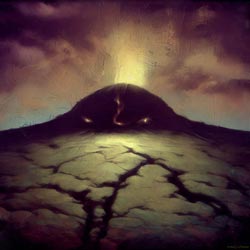 Delving into the heart of H.P. Lovecraft's chilling tale "The Mound," we unearth a narrative that mirrors the very mound it portrays — a seemingly unassuming surface masking profound cosmic horrors and hidden mysteries. Lovecraft's signature themes of humanity's insignificance, forbidden knowledge, and the eerie existence of ancient civilizations intertwine in this saga, creating a narrative mosaic that offers both an unsettling reflection of our fears and an exploration of the unknown depths of the human psyche.
Delving into the heart of H.P. Lovecraft's chilling tale "The Mound," we unearth a narrative that mirrors the very mound it portrays — a seemingly unassuming surface masking profound cosmic horrors and hidden mysteries. Lovecraft's signature themes of humanity's insignificance, forbidden knowledge, and the eerie existence of ancient civilizations intertwine in this saga, creating a narrative mosaic that offers both an unsettling reflection of our fears and an exploration of the unknown depths of the human psyche.
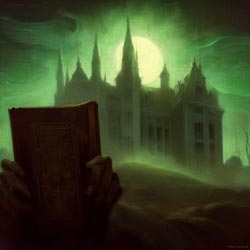 Diving into the labyrinthine narrative of "The Case of Charles Dexter Ward" by H.P. Lovecraft, we unearth a chilling exploration of human ambition, ancestral memory, and the eerie resonance of cosmic dread. This macabre tale delves into the abyss of humanity's obsessions and the timeless struggle against the incomprehensible forces lurking beyond our grasp. As Lovecraft's masterful strokes paint a portrait of psychological unraveling, we are drawn into a sinister world where the line between science and the occult blurs, leaving us haunted by the haunting echoes of our own aspirations.
Diving into the labyrinthine narrative of "The Case of Charles Dexter Ward" by H.P. Lovecraft, we unearth a chilling exploration of human ambition, ancestral memory, and the eerie resonance of cosmic dread. This macabre tale delves into the abyss of humanity's obsessions and the timeless struggle against the incomprehensible forces lurking beyond our grasp. As Lovecraft's masterful strokes paint a portrait of psychological unraveling, we are drawn into a sinister world where the line between science and the occult blurs, leaving us haunted by the haunting echoes of our own aspirations.
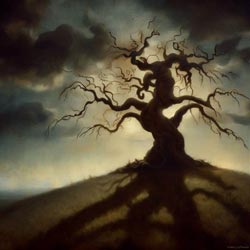 Within the depths of H.P. Lovecraft's cosmic horror legacy emerges a narrative that ventures beyond the expected. "The Tree on the Hill," a collaboration between Lovecraft and Duane W. Rimel, unveils an enigmatic tale of subtle terror. Amidst Lovecraft's many vistas, this story takes a unique path, invoking an ancient unease lurking in the quiet corners of the familiar. As we delve into the partnership of Lovecraft and Rimel, the eerie atmosphere and shared narrative brush offer a different facet of horror, one that explores the hidden terrors that can haunt even the most mundane landscapes.
Within the depths of H.P. Lovecraft's cosmic horror legacy emerges a narrative that ventures beyond the expected. "The Tree on the Hill," a collaboration between Lovecraft and Duane W. Rimel, unveils an enigmatic tale of subtle terror. Amidst Lovecraft's many vistas, this story takes a unique path, invoking an ancient unease lurking in the quiet corners of the familiar. As we delve into the partnership of Lovecraft and Rimel, the eerie atmosphere and shared narrative brush offer a different facet of horror, one that explores the hidden terrors that can haunt even the most mundane landscapes.
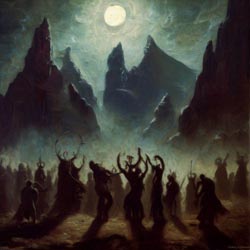 Venturing into the spectral realms of antiquity, "The Very Old Folk" by H.P. Lovecraft bears the reader on an arcane journey. It is a tale etched in the bedrock of cosmic horror, echoing with ancient rites and inarticulate deities. This review endeavors to dissect its dark allure and delve into its place within Lovecraft's literary mausoleum.
Venturing into the spectral realms of antiquity, "The Very Old Folk" by H.P. Lovecraft bears the reader on an arcane journey. It is a tale etched in the bedrock of cosmic horror, echoing with ancient rites and inarticulate deities. This review endeavors to dissect its dark allure and delve into its place within Lovecraft's literary mausoleum.
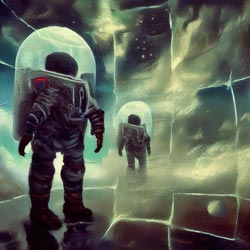 In the intertwining shadows of Lovecraft's narrative tapestry, "In the Walls of Eryx" emerges as a collaboration that melds cosmic horror and existential turmoil. Crafted by H.P. Lovecraft and Kenneth Sterling, this story weaves the mysterious and the alien into a chilling melody, resonating with Lovecraft's signature eerie symphony. This comprehensive review flays away the layers of symbolism, narrative criticism, and literary analysis, comparing the piece to Lovecraft's broader canon.
In the intertwining shadows of Lovecraft's narrative tapestry, "In the Walls of Eryx" emerges as a collaboration that melds cosmic horror and existential turmoil. Crafted by H.P. Lovecraft and Kenneth Sterling, this story weaves the mysterious and the alien into a chilling melody, resonating with Lovecraft's signature eerie symphony. This comprehensive review flays away the layers of symbolism, narrative criticism, and literary analysis, comparing the piece to Lovecraft's broader canon.
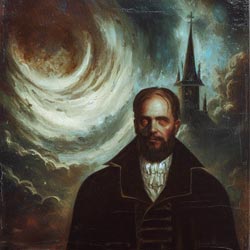 Within the shadowy corners of H.P. Lovecraft's formidable canon, "The Evil Clergyman" stands as a chilling testament to the macabre and the unknown. This comprehensive review delves into Lovecraft's dark narrative, unearthing intricate layers of symbolism and thematic richness, while grappling with the occasional discord of critical perspective. With insights from esteemed scholars, we weave through the enigmatic tapestry of Lovecraft's cosmic horror.
Within the shadowy corners of H.P. Lovecraft's formidable canon, "The Evil Clergyman" stands as a chilling testament to the macabre and the unknown. This comprehensive review delves into Lovecraft's dark narrative, unearthing intricate layers of symbolism and thematic richness, while grappling with the occasional discord of critical perspective. With insights from esteemed scholars, we weave through the enigmatic tapestry of Lovecraft's cosmic horror.
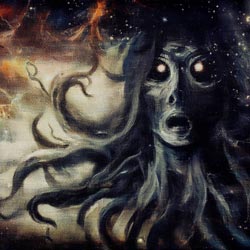 Emerging from the stygian depths of H.P. Lovecraft's intricate web of horror, the cryptic tale "Medusa's Coil" resonates with an eerie cadence that dances on the precipice of the known and the unknown. The ensnaring narrative, entwined with grotesque beauty and cosmic terror, unfurls an odyssey into Lovecraft's unique brand of macabre. We voyage through critiques from esteemed scholars, thematic exploration, symbolism, and connections to the wider Lovecraftian corpus in this review.
Emerging from the stygian depths of H.P. Lovecraft's intricate web of horror, the cryptic tale "Medusa's Coil" resonates with an eerie cadence that dances on the precipice of the known and the unknown. The ensnaring narrative, entwined with grotesque beauty and cosmic terror, unfurls an odyssey into Lovecraft's unique brand of macabre. We voyage through critiques from esteemed scholars, thematic exploration, symbolism, and connections to the wider Lovecraftian corpus in this review.
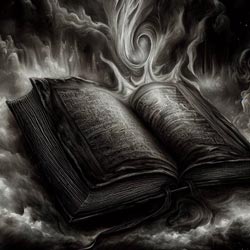 In the eldritch pantheon of Howard Phillips Lovecraft's literature, "The Book" stands as a haunting testament to the indomitable power of forbidden knowledge and the omnipresent danger it conceals. This chilling tale, steeped in an atmosphere of relentless dread, thrusts readers into a realm of cosmic horror and existential turmoil. Lovecraft's prose, like ink dripping from a tormented pen, crafts a narrative that blurs the boundary between reality and nightmare, inviting readers to peer into the abyss of the unknown.
In the eldritch pantheon of Howard Phillips Lovecraft's literature, "The Book" stands as a haunting testament to the indomitable power of forbidden knowledge and the omnipresent danger it conceals. This chilling tale, steeped in an atmosphere of relentless dread, thrusts readers into a realm of cosmic horror and existential turmoil. Lovecraft's prose, like ink dripping from a tormented pen, crafts a narrative that blurs the boundary between reality and nightmare, inviting readers to peer into the abyss of the unknown.
- Lovecraft - The Descendant
- Lovecraft - Azathoth
- Lovecraft - Collapsing Cosmoses
- Lovecraft - The Diary of Alonzo Typer
- Lovecraft - Ibid
- Lovecraft - The Horror in the Burying-Ground
- Lovecraft - The Disinterment
- Lovecraft - The Thing on the Doorstep
- Who is Robert Hayward (R.H.) Barlow?
- Lovecraft (Barlow) - The Night Ocean






